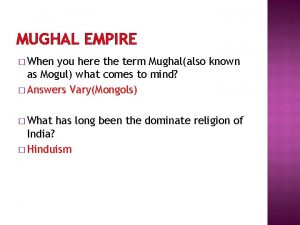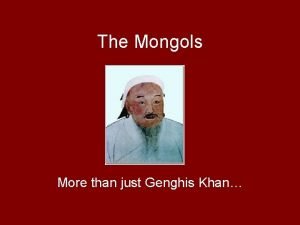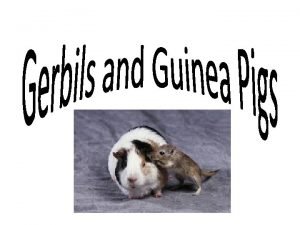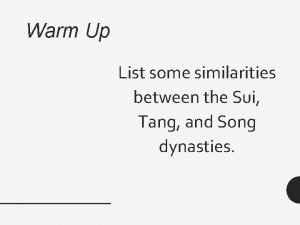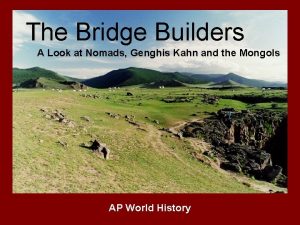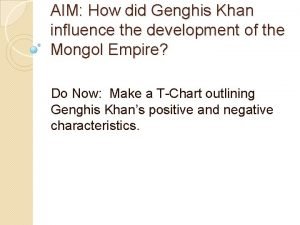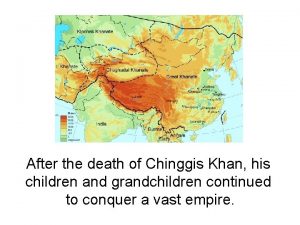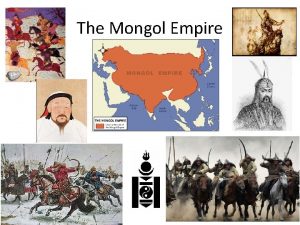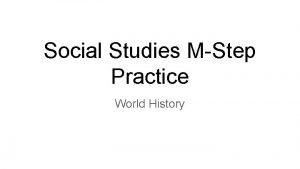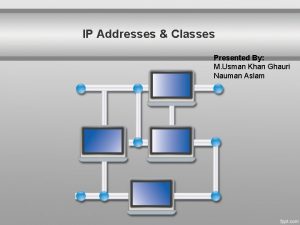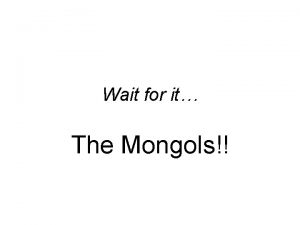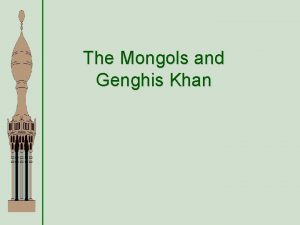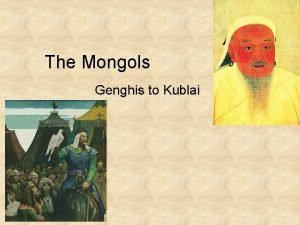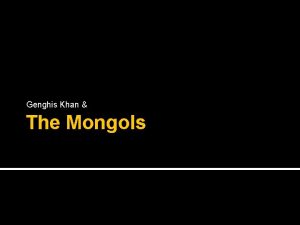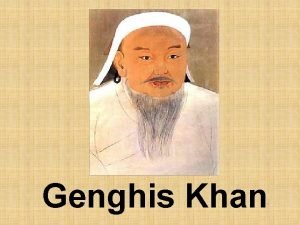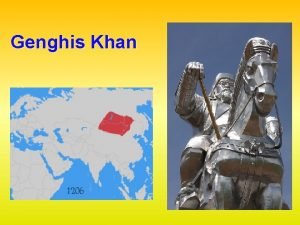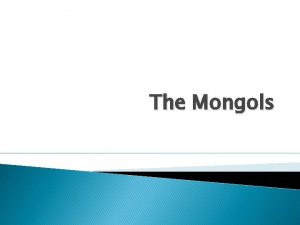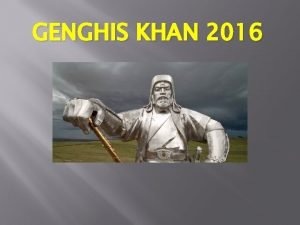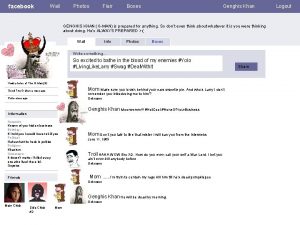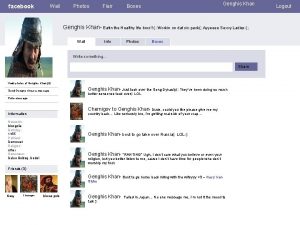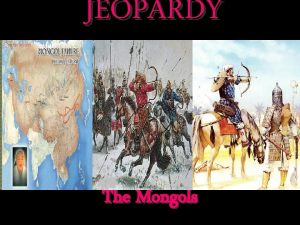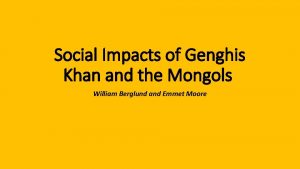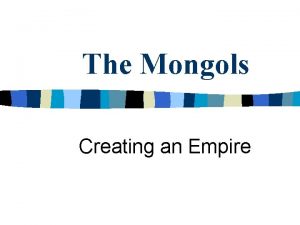The Mongols More than just Genghis Khan Steppe













- Slides: 13

The Mongols More than just Genghis Khan…

Steppe Life • Nomadic peoples of the Asian steppe. • Landmass of Eurasia that stretches from Manchuria to Hungary; dry grassland • Steppe environment is significant: – Connects east and west. – Extreme temperature changes. – Allowed Mongols to become adept horseman because they were constantly on the move, searching for good pasture. • Traveled together in clans - each clan descends from a common ancestor.

Mongol Society • Nomadic life meant… – Keeping claim to land was difficult. – Constant interaction between nomadic and settled peoples. – Dependence upon settled peoples for goods and services.

Genghis Khan Unites the Mongols • 1200: Mongol clan leader (khan) seeks to unify lands under one leader. • 1206: Accepts the title Genghis Khan - “universal ruler” Led the Mongols in conquering much of Asia. • 1215: Invaded the northern Jin empire. • 1221: Angered by the murder of a Mongol trader at Muslim hands, Genghis brutally conquers much of central Asia.

Genghis Khan… • Was a brilliant organizer: – Grouped warriors in armies of 10, 000 with 1, 000 man brigades, 100 man companies, and 10 man platoons. • Was a gifted strategist: – Used tricks to confuse his enemies - pretended to flee, soldier dummies, etc… • Used technology to his advantage: – Adopted Chinese catapults to conquer other cities. • Used cruelty as a weapon: – Terrifying his enemies into surrender - killed entire populations.

The Mongol Empire

The Mongol Empire • Though Genghis died in 1227, his successors continued to expand his empire - conquered much of Eurasia in 80 years. • The Khanates: – – – Ogadai, Genghis’ son, becomes the Great Khan. Completed the conquest of China and invaded Korea. Leveled Kiev and got all the way to Venice and Vienna. Conquest ends when Ogadai dies in 1241. 1260: The Mongol Empire is divided into 4 khanates. 1260: Kublai Khan names himself Great Khan. • Mongols as Rulers: – Adopted aspects of culture of the people they ruled. – Each khantate became culturally different, setting the foundation for division. • Pax Mongolia: – 1200 s-1300 s: Mongols imposed stability and law across much of Eurasia. – Facilitated the spread of ideas, trade, religion, and even disease.

Empire of the Great Khan • Kublai Khan conquers China: – Founded the Yuan Dynasty. – United China for the first time in 300 years. – Opens China to greater foreign contacts and trade. – Tolerated Chinese culture and made little changes. – Kublai Khan spends almost his entire life in China.

Failure to Conquer Japan • 1274 & 1281: Kublai Khan tried to conquer Japan by sending huge fleets. • The second attempt carried 150, 000 Mongol, Chinese, and Korean warriors - the largest fleet until WWII. • Japanese called the environmental elements (wind, rain, rocky shores) kamikaze or “divine wind” that saved them from the Mongols.

Mongol Rule in China • Mongol rulers kept a separate identity: – Lived apart from their subjects. – Obeyed different laws. – Kept the Chinese out of high federal offices but kept many at the local levels. – Believed foreigners were more trustworthy because they had no loyalties. • Improved Chinese infrastructure: – Grand Canal. – Paved highways. • Encouraged foreign trade: – Established mail routes that linked China to India and Persia. – Silk Roads continued as well.

Marco Polo

Marco Polo at the Mongol • Court Young Venetian trader, • • • traveled on the Silk Road. 1275: Arrived at Kublai Khan’s court. Served as a government missionary to various Chinese cities. Worked for Kublai Khan for 17 years. 1292: Went back to Venice. When captured back in Italy, told tales of his travels in China - people couldn’t believe civilizations were that

The End of Mongol Rule • During the last years of Kublai Khan’s life, the empire began to crack. • Heavy spending on fruitless wars. • Overtaxed Chinese. • 1294: Kublai Khan dies - the Yuan dynasty lasts for 74 more years but with little stability. • 1300 s: Rebellions fueled by famine, flood, and disease. • Other khantates fall apart as well - Persia in the 1330 s, Central Asia in the 1370 s, and the Golden Horde in Russia in the 1480 s.
 More more more i want more more more more we praise you
More more more i want more more more more we praise you More more more i want more more more more we praise you
More more more i want more more more more we praise you Genghis khan and babur
Genghis khan and babur Genghis khan
Genghis khan Primordial atrium
Primordial atrium Genghis khan gerbil
Genghis khan gerbil Genghis khan dna map
Genghis khan dna map Genghis khan
Genghis khan Genghis khan rule
Genghis khan rule Genghis khan grandchildren
Genghis khan grandchildren Genghis real name
Genghis real name Three world order
Three world order Genghis khan 168-0
Genghis khan 168-0 Wait for it...the mongols
Wait for it...the mongols


